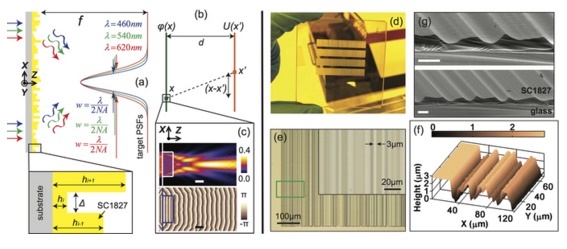Scientists are working on developing an ultra-thin lens that will turn out to be inevitable for all future smartphones and cameras. The lens designed are reportedly 10 times thinner than human hair and insertion of such lens will reduce the weight and dimensions of smartphones. Recently a group of scientists headed by Prof. Rajesh Menon of the University of Utah submitted a paper to Scientific Reports for publish. The paper is titled “Chromatic-Aberration-Corrected Diffractive Lenses for Ultra-Broadband Focusing”.

Check out the Abstract of the project:
“We exploit the inherent dispersion in diffractive optics to demonstrate planar chromatic-aberration-corrected lenses. Specifically, we designed, fabricated and characterized cylindrical diffractive lenses that efficiently focus the entire visible band (450 nm to 700 nm) onto a single line. These devices are essentially pixelated, multi-level microstructures. Experiments confirm an average optical efficiency of 25% for a three-wavelength apochromatic lens whose chromatic focus shift is only 1.3 μm and 25 μm in the lateral and axial directions, respectively. Super-achromatic performance over the continuous visible band is also demonstrated with averaged lateral and axial focus shifts of only 1.65 μm and 73.6 μm, respectively. These lenses are easy to fabricate using single-step grayscale lithography and can be inexpensively replicated. Furthermore, these devices are thin (<3 μm), error tolerant, has low aspect ratio (<1:1) and offer polarization-insensitive focusing, all significant advantages compared to alternatives that rely on metasurfaces. Our design methodology offers high design flexibility in numerical aperture and focal length, and is readily extended to 2D." The ultra thin lenses designed are called Super-achromatic lens and the most intriguing feature about super achromatic lens is that it can be manufactured from any material like fiber, plastic apart from glass. Nowadays smartphones use several curved lenses together but this is the first time flat lens will be used in place of curved lenses. If lenses can be developed from plastic, then the phones can be more lighter, resistant to damage and cost effective. Source: Nature








Leave a Reply